Art World
Pablo Atchugarry, Modern Master of Carrara Marble, Fits Right in Amid Roman Ruins
A historic art-form takes on new life.
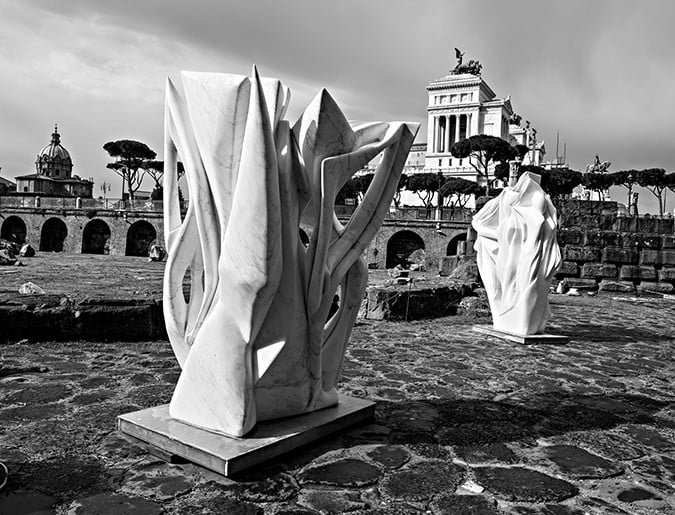
A historic art-form takes on new life.

Sarah Cascone

Across the street from the Forum this summer, visitors to Rome are treated to an unexpected sight: Uruguayan sculptor Pablo Atchugarry‘s “Eternal City, Eternal Marbles,” on view at Trajan’s Market, a building complex dating back to the second-century.
When one thinks of Rome, it conjures up visions of romantic ruins, crumbling edifices built by the ancients nestled among a bustling Italian city full of cobblestone streets. Contemporary art, while present, isn’t necessarily the first thing that comes to mind.
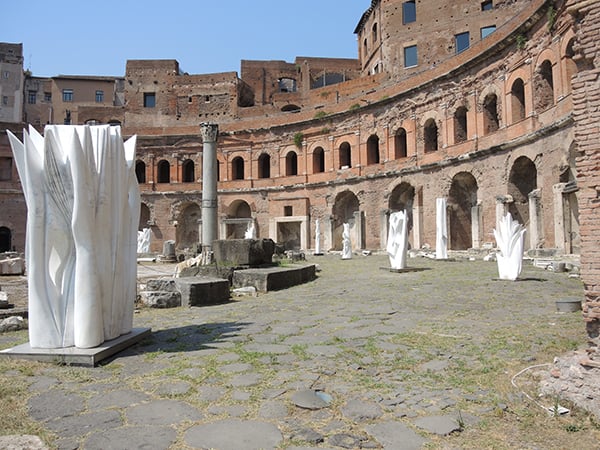
Pablo Atchugarry, “Eternal City, Eternal Marble.”
Photo: Sarah Cascone.
With his monolithic works, Atchugarry creates dreamy marble visions that are both undeniably modern and inextricably linked to ancient and Renaissance art. The exhibition site offers a pair of remarkable contrasts: translucent marble next to the crumbling red brick (recalling the emperor Augustus’s famous boast that he “had found a city of brick but left one of marble”), and the unexpected presence of contemporary art set against a backdrop of ancient ruins.
The palpable presence of the past adds an impressive historical weight to Atchugarry’s contemporary work, here seamlessly integrated into a space believed to have been the world’s oldest shopping mall. Now, it’s home to the artist’s sleek, elegant towers that can seem both organic and man-made, recalling a futuristic-looking city skyline.
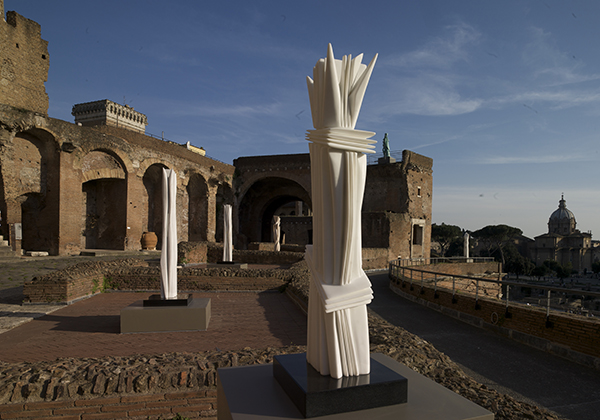
Pablo Atchugarry, “Eternal City, Eternal Marble.”
Photo: Aurelio Amendola and Daniele Cortese.
Marble isn’t exactly an easy material to get your hands on, nor to manipulate, and as a result, you’d be hard-pressed to find many artists working with it in 2015. Atchugarry came to his favored material by chance. As a young man, he worked in both painting and sculpture; a trip to Italy changed all that.
“Once he had his first contact with the marble, he knew that that was his medium and there was no way back,” the artist’s son, Piero, told artnet News.
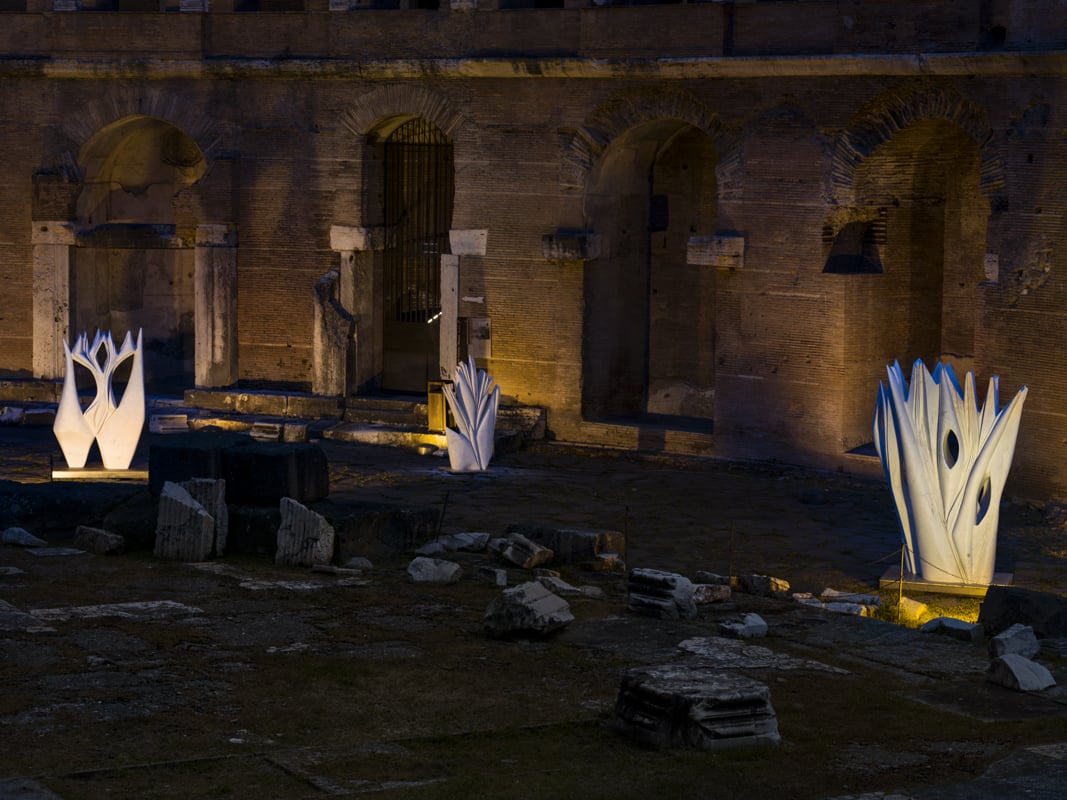
Pablo Atchugarry, “Eternal City, Eternal Marble.”
Photo: Aurelio Amendola and Daniele Cortese.
“I felt the marble could be a good carrier of light,” said Atchugarry, in a phone conversation translated by Piero. “I felt the necessity to explore the marble; it was almost like it was calling me.”
The self-taught artist counts the Renaissance greats such as Michelangelo among his inspirations, as well as more contemporary artists including Constantin Brancusi and Jean Arp.
The show in Rome contains the artist’s first work in Carrara marble, 1979’s Lumiere, and tracks his explorations of the rock over subsequent decades.
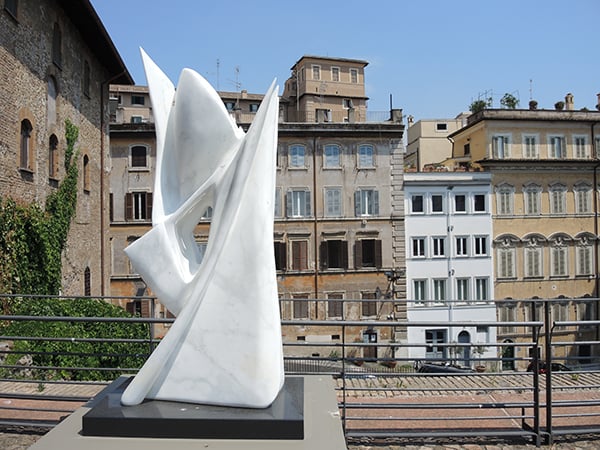
Pablo Atchugarry, “Eternal City, Eternal Marble.”
Photo: Sarah Cascone.
Though Atchugarry has collectors all over the world, he was somewhat limited geographically for this exhibition. Because of the weight of his works and the difficulty in transporting it, the pieces on show were largely drawn from Europe collections.
Another challenge Atchugarry faces as a marble sculptor is sourcing his material. Over the years, he’s developed a close relationship with Carrara’s Michelangelo Cave quarry.
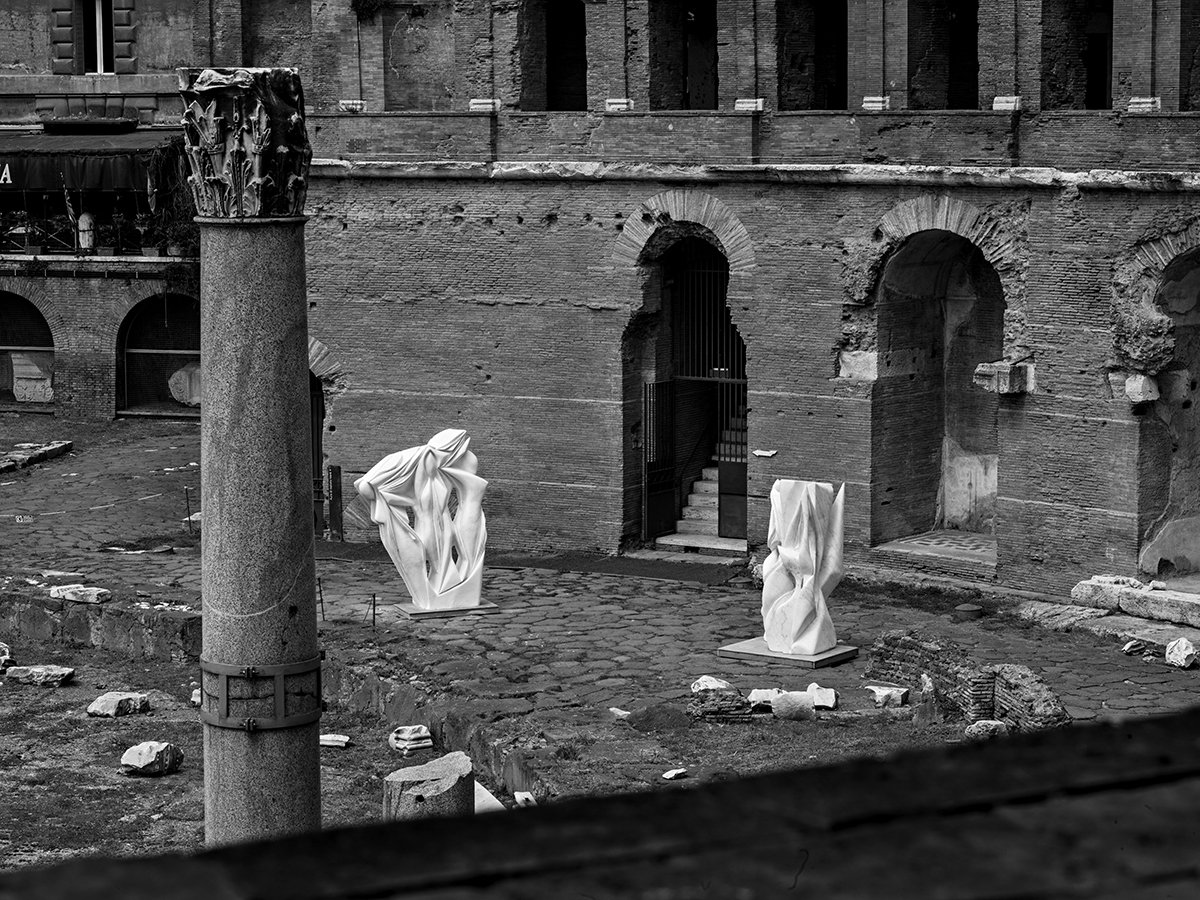
Pablo Atchugarry, “Eternal City, Eternal Marble.”
Photo: Aurelio Amendola and Daniele Cortese.
When the quarry has a slab of marble of the appropriate size that seems structurally sound and lacking in spots, stains, and veins, they set it aside for the artist. However, only a small percentage of what they are able to get is suitable for monumental statuary.
Atchugarry can sometimes wait up to two years to get the material for particularly large works, so if he only ever worked in marble, he would have few completed sculptures. As a result, the artist also also creates bronze cast editions of his pieces, painted black, turquoise, or red, and occasionally works in olive wood and stainless steel.
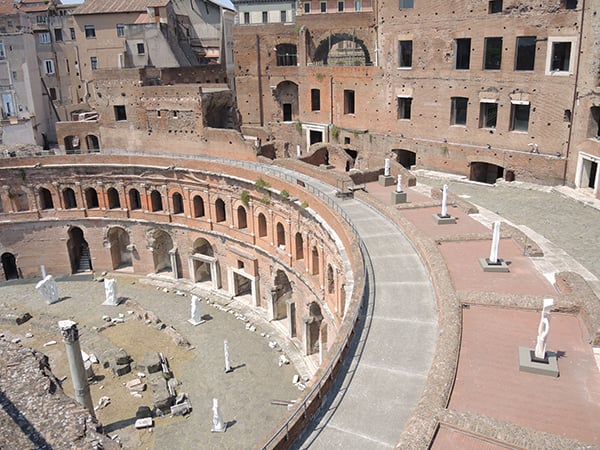
Pablo Atchugarry, “Eternal City, Eternal Marble.”
Photo: Sarah Cascone.
Though he’s included all three materials in the retrospective (and has a piece carved from 800-year-old olive wood on view at Expo Milan), Atchugarry is truly in his element in marble. The intricate sculptural folds that characterize so much of his work make the most sense in this medium, where they recall the intricately-draped clothing so common in traditional marble sculpture.
Atchugarry invites the comparison, but also sees an important distinction. Whereas for the ancients and Renaissance masters, the clothes are just a thin layer atop the human body, “the folds are the main structural element of my work.”
When he sees his sculpture amid the ruins, Atchugarry can’t help but think that “it’s almost as if it was born to be there.”
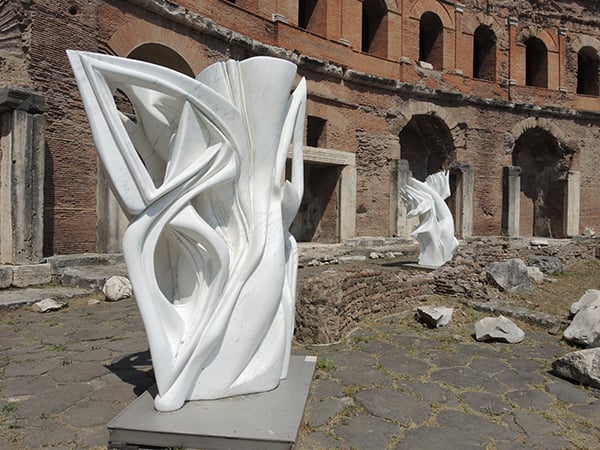
Pablo Atchugarry, “Eternal City, Eternal Marble.”
Photo: Sarah Cascone.
Related Stories:
Tourist Fined €20,000 for Carving His Initial on Rome’s Colosseum
Rome Will Rebury Ancient Stables It Can’t Afford to Excavate
Italian Government Allocates $20 Million to Reconstruct Colosseum Arena